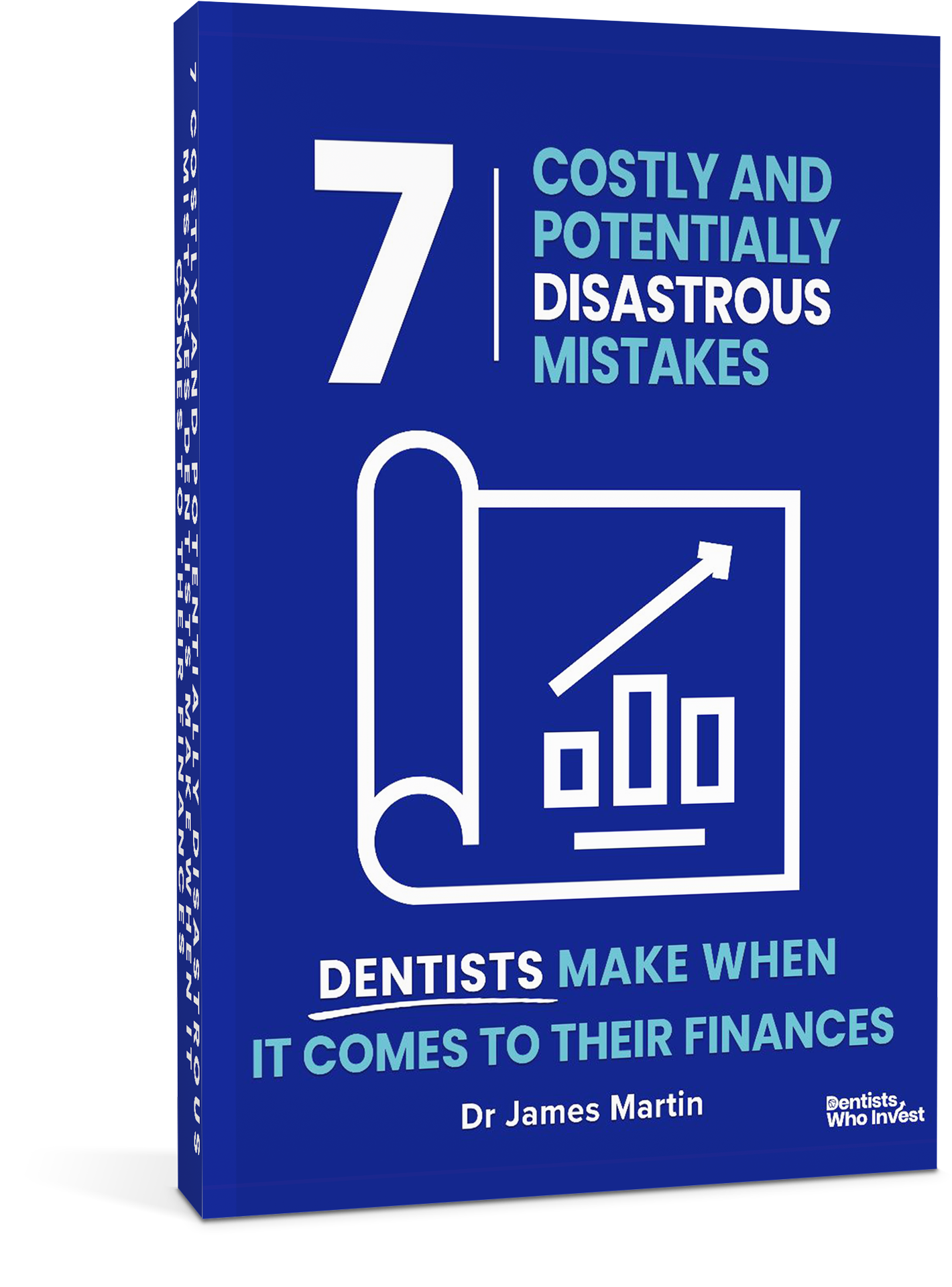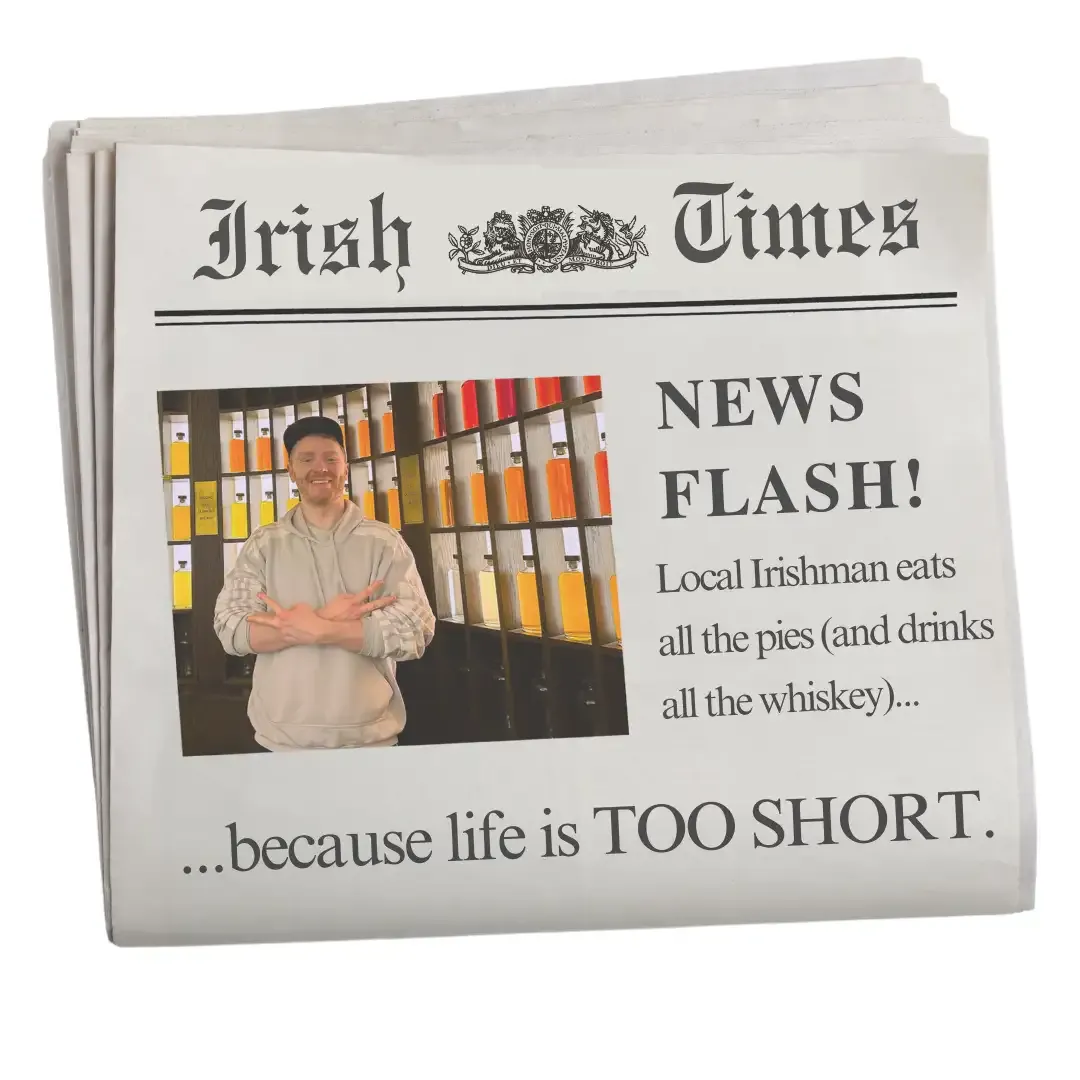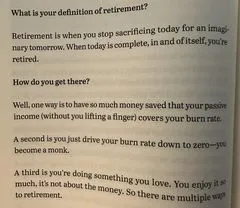Description
Check if your dental practice qualifies for capital allowances here >>> https://www.dentistswhoinvest.com/chris-lonergan
———————————————————————
UK Dentists: Collect your verifiable CPD for this episode here >>> https://courses.dentistswhoinvest.com/smart-money-members-club
———————————————————————
The NHS pension is often misunderstood—but getting it right is crucial to your long-term financial wellbeing. In this episode, financial planner Luke Hurley demystifies the system and reveals how it fits into your wider retirement strategy.
Learn the real structure of the NHS pension scheme (hint: it’s not a savings pot!), how your benefits are calculated, and what’s changed in 2025. Luke walks through the key differences between the 1995, 2008, and 2015 schemes, explains the revaluation process, and shares vital insight on retirement age reforms, spouse benefits, and how this scheme supports your journey to financial independence.
Perfect for dentists in the NHS at any career stage—and don’t forget, verifiable CPD is up for grabs via the link in the episode description.
———————————————————————
Disclaimer: All content on this channel is for education purposes only and does not constitute an investment recommendation or individual financial advice. For that, you should speak to a regulated, independent professional. The value of investments and the income from them can go down as well as up, so you may get back less than you invest. The views expressed on this channel may no longer be current. The information provided is not a personal recommendation for any particular investment. Tax treatment depends on individual circumstances and all tax rules may change in the future. If you are unsure about the suitability of an investment, you should speak to a regulated, independent professional. Investment figures quoted refer to simulated past performance and that past performance is not a reliable indicator of future results/performance.
Transcription
Dr James, 0s:
Hey everyone, welcome to this podcast on the NHS pension. We're going to cover how the NHS pension actually works, and by that I mean the ins and outs and specifics broken down in layman's terms. I'm joined by Luke Hurley, who represents Videre Financial Planning. Luke shares his expertise and wisdom in helping thousands of clients over the years with their NHS pension and also modelling it from a cash flow perspective. So looking forward to listening in and learning. I'm also super excited today to announce a brand new feature for the Dentists Who Invest platform, and that is free verifiable CPD to all UK dentists who have enjoyed this podcast episode. Whenever you've finished the episode, all you have to do is click the link in the podcast description. It'll take you right through the Dentists Who Invest website. You'll be able to complete a short questionnaire and, once passed, you fill in your reflections and we'll go ahead and email over to you your verifiable CPD certificate, which is entirely free. What that means is this podcast episode will be able to contribute towards your verifiable CPD. Hours during this learning cycle will be able to contribute towards your verifiable CPD hours during this learning cycle. Luke, shall we go ahead and kick things off?
Luke, 1m 11s:
Sounds like a plan, James the NHS pension and your financial plan. So for me, it's always important to have some context and remember why we're doing various things, and that includes saving into the NHS pension. So if we take a step back from a financial planning perspective and think, what's it all about? Financial planning really is about working out what your vision is for the future, and for most people, the number one financial goal is ultimately financial independence. So financial independence is the point where you've got enough money. You're going to work because you want to, not because you have to. You've accumulated all the assets and the resources that will sustain your lifestyle for the rest of your life without the risk of running out of money, and it's key and same with all things, to start with the end of mind. So for most people, the big question is how much do you actually need? What is the cost of your lifestyle? Will you have enough? Will you run out of money? The problem, I think, James, is lifestyle is different for everyone, isn't it? Ultimately, I meet lots of different clients who have different preferences in terms of how they spend their money and different visions for the future. So it's about working out what you're aiming for, what you want to achieve and how much your life is going to cost from now until, unfortunately, when you pass away. So most people, with that in mind, unfortunately don't know where to start. But the simple place to start is to work out exactly what you're spending now and be intentional about it and know what your outgoings are and make some assumptions for how that will change in the future. So start with what your, your current outgoings are. Work out roughly what that you know might might be throughout various changes in life. To give some context, there's a. There's a national study that's done that looks at retirement living standards across the UK and the last time I looked at that, the so-called comfortable retirement was pinned at just under £60,000 per annum net of tax. So you're looking at 5k for a household, that is, for a couple to be spending 5K per month net of tax. For UK standards that's seen as a comfortable retirement. A moderate retirement is seen to be £43,000 per annum and sort of a minimum retirement which I really don't believe, to be honest, because I don't know how anyone would survive is £22,500 per annum. So that's actually less than two state pensions, which is not a huge amount of money given the current cost of living. So that's the national average. Obviously, as I said, everybody's different on that and it's really about knowing what your number is from a financial planning perspective, what number you're targeting in terms of being financially independent, um to to sort of move that forward. What I was going to do, James, is quickly um show a very short case study, um using some financial planning software, as to where an NHS pension would fit in, um when we actually do those retirement plans for people. So on screen now. Hopefully that's showing, is it, James? Yeah, great. So on screen now we have a financial plan, very basic. I've kept this extremely, extremely simple, and what we do from a financial planning perspective is we draw up a timeline for a client and we work out throughout the different phases of life how much they need in retirement. So for this client they've got five years until they wish to retire at 60. You've got the ages down the bottom here. They're looking to spend £60,000, because that's the national deemed comfortable retirement throughout phase one of their retirement, which is from 60 to 80, and then we've decided that they're going to drop that down when they're less active. In the later years, from 80 onwards, they're going to spend 45 000 pounds per annum. And then we've got some care costs to this is a husband and wife, a couple. We've assumed that they're both going to go into care, unfortunately in the last five years of life, and it's going to cost 52,000 pounds per annum. So a thousand pounds per week per person, which is, uh, unfortunately the going rate. Um, that's that's, you know, that's somebody's timeline, that's their goals, and then what we want to do from a planning perspective is work out what that looks like every year for the rest of their life from a um, a cash flow perspective. So've plotted that out. This is the point at which they stop work at age 60. Then you've got the first phase of retirement. And then you've got the drop down where their spending reduces as they become less active. And then you've got phase two and then the care costs. And so where does the state pensions fit in to begin with? So two state pensions, you're looking at just under £12,000 per person per annum for a state pension. So there's your first layer of passive recurring income in retirement for this couple. And then we've got an NHS pension. So one of the clients here has a 1995 section NHS pension, fixed recurring income that's going to hit their account every year for the rest of their life to bring them up to the black line, which is the 60k, as I said, and then dropping down to 45. So this spike here is because the NHS pension, as many of you will know, you can get a lump sum out of it as well. It's not just a recurring income, and so you can see that spike of money entering into their plan right at the outset. So to begin with they're going to be working, which is employment, and then where are they going to find the money for the rest of their years of retirement? Well, they're going to have to tap into their capital. So when we're looking at doing a retirement plan for somebody. We're looking at streams of income. Let say, uh, state pension, as I mentioned, NHS pension, it might be rental income, uh, that's the regular, uh money that's going to flow into their accounts um, every year, for the rest of their lives, hopefully. And then also, what do they have in in the way of capital? Sometimes I refer to that as the reservoir in terms of money, in ices savings, possibly, um, money purchase pensions, also known, known as SIPs what do they need to draw down on to effectively meet that black line, that spending requirement for the rest of their life? And if they do that and there's no red on the plan, which is the case in this scenario, the client's not due to run out of money. Ultimately, from a from a cash flow perspective, when we chart their trajectory, the second part of the equation, of course, is what does that look like from an asset perspective? And when we look at the second chart and I've plotted out their investments and their non-liquid assets, which is their property, you can you can quite clearly see that their, their wealth is actually going up every year until they pass. So what that tells me straight away is we either need to do one of two things we either need to work out a way for them to spend more money or, ultimately, to gift more money, because if you die with too much, then your family will be subject to quite a substantial inheritance tax liability at that point in time. So that's where real financial planning comes in in terms of working out how we can make adjustments to improve the situation. So if I just flick back now, James, to the presentation, hopefully that's some useful context for everybody. But if we just move forward, so just conscious of time, uh, the NHS pension, how does it work? So I've you know, we we discussed this, James, didn't we back in? What was it? 2020?
Dr James, 9m 4s:
I think, yeah, 20, 2020, that's right wow and then we listened to it back, didn't we? And we were like, right, it's due, due an update, isn't it? Because a few things have moved around since then due a refresh?

Luke, 9m 14s:
yes, definitely, um, so I can't believe that's five years ago in truth. Um, how does it work? Some key considerations. The first thing, I think, is to understand that the NHS pension, unlike a private pension some people will use the term SIP, or money purchase pension or DC pension the NHS pension is a, as I mentioned earlier, is a promised future income from the government. Remember it's that fixed, regular income that's paid to you throughout retirement. That's paid to you throughout retirement. It is not, in any way, shape or form, an investment with any underlying sort of capital value attached to it. And I think that's probably the biggest or certainly one of the biggest misconceptions at times, particularly those towards the start of their careers they don't fully understand that what you're accumulating is a promised future income from the government. Now, that is a fixed, guaranteed and index linked income from the government Once you do start work. It's going to get paid to you once you start drawing it, for the rest of your life ultimately, and so it's closer to a state pension than a SIP. As I say, the reason why it's fixed is you can't sort of change your levels of withdrawals like you could if you're drawing from a private pension, but it will go up every year. As I've put on the index linked. It will go up every year with inflation. It'll be revalued to enable it to keep pace with the cost of living. So the biggest takeaway should be please do not expect this to be a pot. Lots of people use the terminology my pot. It's not physically a pot of money, it's an unfunded scheme, and so you know there is. There is no capital value beneath it. Some people will attach a value to it and it's kind of a theoretical value, particularly when the lifetime allowance was introduced as a means of trying to attach a value to it. But but that's actually not how the pension actually works itself. So that's the first point. The second point contributions. I think this is possibly, as I say, second to how it works, it's probably the biggest misconception your contributions that you are paying because there is no capital. It is not going into a pot, it is effectively a membership fee that is giving you access to the pension. It is not building up somewhere a pot of money that you're now going to draw down on. I would say the biggest, or probably most unfair element of for me anyway, of the NHS pension is those contributions are tiered. So the more you earn, the higher the percentage of your earnings you have to pay in terms of the membership fee. And for me, that's always struck me as being, you know, unfair because naturally your contributions go up if you're earning more. They go up by the you know there being more earnings there to be contributing towards. So bear in mind contributions are not going into a pot, they are a membership fee. There is nothing hidden in the background that you are accruing. When you get your statement from the NHS pension, you will see on it that it has a pension figure. That pension figure is the annual amount that you are due to receive at the point that you start drawing on your pension, if you're at retirement normal pension age. So if you're at your normal pension age, the figure on your total reward statement or pension valuation statement, that's the amount that you would get every year for the rest of your life. For those that have benefits in the 1995 section, you will see on there as well a figure for a lump sum, which is a tax-free lump sum. I'll come on to that in a moment, but that's the key understanding. If you're paying contributions, you're not actually putting that money into a pot with your name on it. Those contributions are tax deductible, so you're paying them. You're getting tax relief on that, in the same way that you get tax relief on contributions that go into a private pension, a personal pension or a SIP. The difference, though, is with those private personal pensions the money is really is. It's an investment account and the money that you're paying in is going in, and the growth that you're getting is according to how much you've paid in and how much investment growth you've had on the assets that sit inside the pension. With the NHS pension, there is no investment element to it, so that's key growth. How is the pension actually growing? Well, ultimately, the growth in your NHS pension is determined by two main factors. The first is your earnings. So, as I said earlier, your earnings. You'll find that when you look at your NHS pension statements, they will have a clear record of all the earnings that you've had in the NHS and those earnings are then converted into the annual pension using an accrual rate. So let's use the 2015 section as an example. If you just joined the NHS pension for this tax year, your earnings if your earnings are £100,000, those earnings would be converted into an annual pension for this year of £1,850. So for the current tax year, you've earned £100,000 in the NHS. You've therefore accumulated an annual pension for when you get to retirement of £1,850 paid to you every year for the rest of your life. In the next tax year, let's say, you earn £100,000 again, you've now got another £1,850 that's built up in your pension and you're just going to add each year's accrual together to get the pension that you're going to be paid in the future. So that's the first thing. Earnings are the key engine, the key driver of growth in your pension. The second is the fact that the previous pension that you've accumulated is ultimately going to be revalued every year. So if you're an active member of the pension scheme, they'll look back at the previous benefits that you've built up and they will be revalued with CPI plus 1.5%. So everything that you've accumulated. The whole idea is to keep pace with inflation, but you actually get more than the rate of inflation. But you actually get more than the rate of inflation. If at any point you come out of the NHS pension, you become what's called a deferred member and you stop contributing, then what you've built up will be ring-fenced and it will grow just with inflation. It won't get that extra 1.5%. And so where somebody might have built up a reasonable amount in the NHS pension, often it makes sense, even if they switch to fully you know the majority of their earnings switch to being private. Sometimes it does make sense to sort of still do a very small amount of NHS work because you get that extra 1.5% revaluation factor being applied to all previous pension benefits which, if you've got a reasonable sum accumulated in the pension, is quite sizable. So bear that in mind. So, yes, growth, just always remember growth is tied to earnings. It's not tied to contributions Sections. So there's three sections in the NHS pension. There's the original section, the 1995 section, there's the 2008 section they will often be referred to as your legacy sections and then you've got the 2015 section, which is what you'll be contributing to. Now. I'm not going to go into it, but there was a big court case which meant that people's transition from their legacy section either the 95 or the 2008 into the 2015 section, uh, was impacted by, uh, by that court case, and and there was a ruling against age discrimination, um, and so the exact makeup of your you know, of your pension benefits really is individual to you, um, depending on when you join the pension, um, and so just bear in mind, though, what, when you, when you look at your valuations, you will often have actually two is split into two. So you'll see, the first section of your valuation will be, for most people, their legacy section, and then you have to scroll down to see what you've accumulated in the 2015 section, which, confusingly, for most people, will be the benefits that they've built up since 2022 rather than 2015. But, as I say, let's not delve into that now. How do those sections differ? Well, what they really did when they've reformed the pension and that's the 95, they've reformed. It turned it into the 2008, and then they reformed it, turned it into the 2015. And eight, and then they reformed it, turned it into the 2015. Um, they changed the mechanism for how your pension builds up, as I said to you before about the, the accrual rate and how the pension is converted from earnings into pension. They played around with that mechanism effectively to change how it, how it worked. Um, the biggest change they? They also changed the normal pension age, which is the age at which you can draw on the pension without having a reduction. So the 95 pension, that's 60, then it went to 65 for the 2008, and then it's state pension age for the 2015 section. That's not the age at which you have to draw the pension. You can actually draw it before or after, but if you take it before your normal pension age, then you will be subject to early retirement factors. Notice, I have not used deliberately, have not used the word penalty, because you are just. It's just a mathematical calculation to say if you're taking the pension earlier, then it should start off at a lower factor, a lower rate. So it shouldn't be seen as a penalty. It's just working out what's a fair reduction based on the fact that you're drawing on it sooner, the lump sum. So in the 95 you've got a standard three times pension lump sum and you could take a bit more than that, up to about 5.3 times the pension as a lump sum. If you gave up some more of the annual pension, you you got some, some some tax free lump sum In the 2008, 2015,. There is no automatic lump sum and instead you have to what's called commute give up some of your annual pension, the pension that's going to be paid to you every year for the rest of your life to get that lump sum. And whether that's a good decision for you or not is it's different for everybody. But the reason why you do see people taking the lump sums is because, one, it's tax free and two, they want to bring that money inside their estate and ensure they get value from the pension scheme before they get older. Because, as we'll touch on later, the biggest risk of the NHS pension ultimately is that you die earlier in retirement and you've had less value from it. And so by taking the lump sum, it's ensuring that you and your family are getting that money out of the pension that you've paid into for so long and you know you can go and do various things with it. The one to 12 factor. That doesn't mean that you know you can look at that and say, well, if I'm giving up one pound of annual pension pay to me for the rest of my life for 12 pounds of lump sum, then as long as I live 12 years I'm better off. It's not as simple as that because, one, the lump sum is tax free, the pension is taxable, so you've got to factor in tax. And two, you could do different things with that lump sum. Obviously you could invest it. You'll get growth on it, and so you've got to factor that in as well. Ok, then we've got the spouse and partner pension, the difference between the sections in the 95 more generous. If you passed away spouse partner would get 50 percent. That was then reduced to 37.5 percent and then reduced even further in the 2015 section to 33.75 percent, so effectively a third. You know it's quite clear to see how they've gone about trying to save money as they've reformed that section, the new section of the pension advantages. Uh, well, I've sort of touched on this as I've, as I've gone through the, the main. You saw it on the on the financial plan on the case study, you've got a clear, fixed, guaranteed, um, genuinely passive. You know people talk about passive income. Well, this money really is going to hit your bank account um like clockwork, um. It's index linked. The biggest risk of retirement and wealth building in general, in fact, is inflation, and so you've got an income that's going to keep pace with the cost of living going up. In fact, on that point I look back at notes from when I last looked at that data on retirement living standards and I believe some about four or five years ago it was 47,500 was deemed a comfortable retirement. So that is quite a significant shift and it just really reiterates the importance of accounting for inflation when you're planning out a retirement. It won't run out. People might say, oh well, what if the government doesn't? Well, the UK government in reality has not defaulted on its debts and if it did, then a lot of the other things that you could put your money into will also be worthless at that moment in time because the you know we'll be in a dire situation. And if you compare it to the cost of an annuity which they do do on your statement they give you like a comparison figure which is really to say you know if, to replicate the output from the NHS pension, this is how much you'd have to have in a private pension. Effectively, you'll see that it's. You know it's attractive and the reason being is because ultimately the government is subsidising that. Because ultimately the government is subsidising that. So to replicate the output which is the closest thing to it on the private market would be an annuity. So not going into the nitty gritty of how you can access a private pension, but one of the options is to convert your pot as such into a fixed income for life, an annuity. When you do that comparison, you can see the benefit of how the government is subsidizing that, that pension. The disadvantage is don't forget the tax. So, as I alluded to earlier, the, the, when you look at your statements, the pension figure, that is taxable income. The lump sum is tax-free but the pension is taxable. So you've got to account for that. The uh, the software I showed you earlier. We we have that built in, so we know what. We can net things out and work out how people achieve their numbers net of tax, the lack of flexibility. So it's a fixed income, although it's going up with inflation. It's not like you can front load a retirement with it. You know you're more active in the earlier phase of retirement and therefore, typically, as a financial planner, I would want my clients to plan for more spending when they're more active. So, let's say, on average, you might spend 40 percent less in your 80s than in your in your 60s. So we should, we should account for that. Well, the NHS pension is is, you know, is going to be fixed all the way through, so it's not like you can make those adjustments. Um, the spouse partner pension uh, as I said earlier, that's that's been. Um, that's tied in with the normal pension age. Normal pension age, um, if your normal pension age in the 2015 section is tied to your state pension, and your state pension is is 68, lots of people might turn around and say i'm'm going to be in 12 years' time, I'm going to be 80. If I draw this at normal pension age, after 12 years I'm going to be 80 years old and for some people that's not palatable. If you die, as I alluded to earlier, if you die early in retirement, then you've had poor value from your NHS pension. If you paid into it for many years and you, let's say, you're in the 95 section, you draw it at 60 and you die at 65. Have you had good value? No, not really, because your pension is going to be halved and it's going to significantly impact on on whether that was a good resource for you and your family, and because they've reduced those, uh, the the spouse partner pension provision, from 50 down to what is effectively a third. That only, you know, makes things, makes things worse on that front. They've pushed back the pension age and they've reduced the the spouse partner pension provision, um, so just bear that in mind, the value that you get back from the pension is tied in with your longevity, uh, ultimately, uh, unlike a you know a comparison with a another resource, whether it be a rental property or maybe it's a, a private pension or an investment portfolio which you can pass on to children um and people often mention this it could be reformed, it has. You know, when I started, um, it was just at the point of the transition from 95 to 2008 and the choice exercise that went with that, and then, since then, we've already had another round of reform, uh, bringing in the 2015 section. So could the government reform it again? Yes, how far can they go with it without losing votes, given that this is not just um, a pension scheme, this is not just the NHS pension. When governments make those reforms, they're making it for all public sector pension schemes. Uh, you know, clearly there's a. There's a level at which they're going to start getting um bad press and ultimately governments are interested in getting re-elected, aren't they? So you just have to bear that in mind. But they are the core disadvantages. Very quick checklist James, I know you've got a downloadable checklist, if people want it, of something that we've done previously. So people can certainly reach out, can't they, to get that if they haven't already the? The main thing for me from a financial planning perspective is make sure you get a valuation, um on a on an annual basis and keep track of of your pension and know exactly what's what's there, what you can expect from it. If you don't have that information and it's a reasonable resource for for retirement provisions then how are you going to do a proper financial plan unless you know what you stand to benefit from in the future by way of the NHS pension scheme and check your membership extract so you can actually request a spreadsheet that shows the record of earnings that they've got and where those earnings have come from. And it's definitely a worthwhile exercise for you to just cast an eye over that and sense, check it and make sure that it tallies up with what you're expecting, because you know mistakes do happen and it's important that you get make sure you get credit for all of the years that you've been a member.

BY SUBMITTING MY EMAIL I CONSENT TO JOIN THE DENTISTS WHO INVEST EMAIL LIST. THIS LIST CAN BE LEFT AT ANY TIME.








